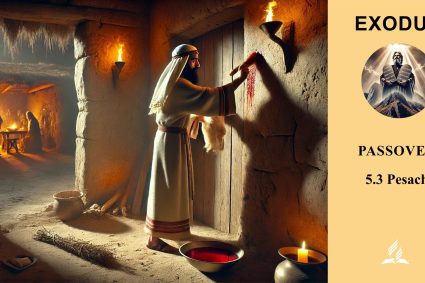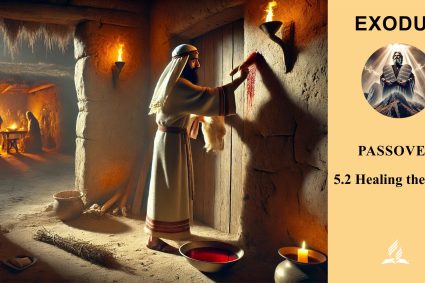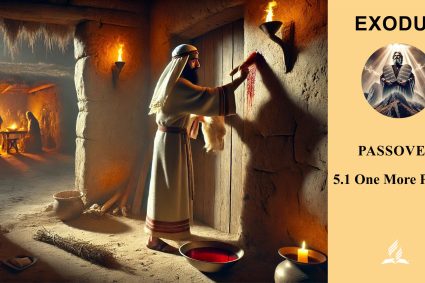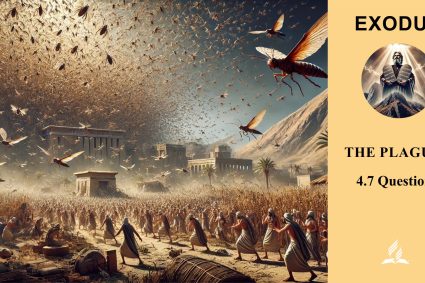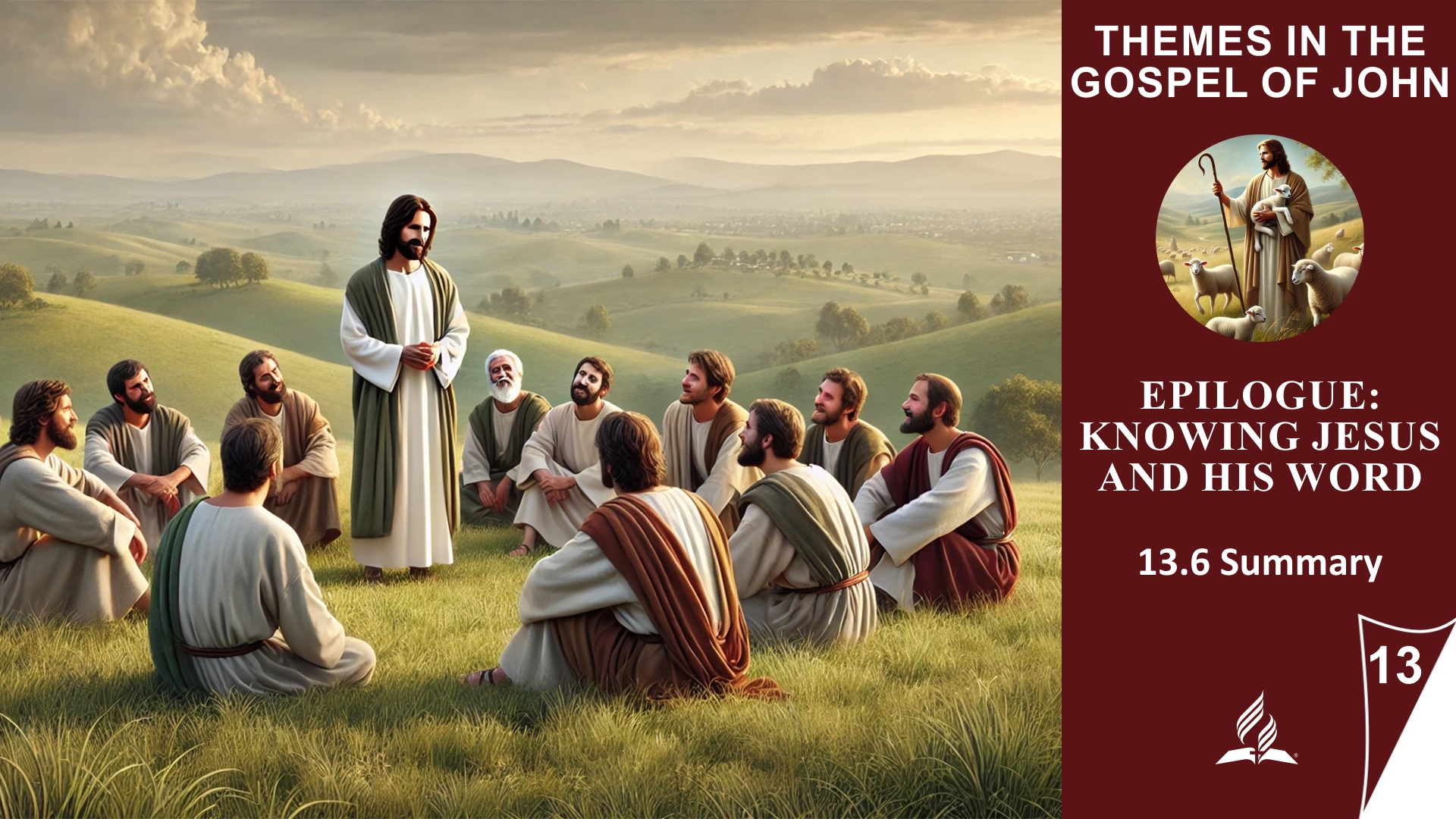


13.6 Summary
Jesus—The Light That Leads to Truth
The final lesson of this quarter summarizes the central themes of faith emphasized in the Gospel of John. It invites us to build a deeper relationship with Jesus and remain in His word to grow spiritually and reflect His light in the world.
13.1 Encounter in Galilee
-
Jesus met His disciples in Galilee after His resurrection, encouraging them and equipping them for their ministry.
-
The encounter reminds us that Jesus also wants to meet us in our daily lives to strengthen and guide us.
-
Key Thought: Jesus seeks a personal encounter with us to transform us and enable us for His mission.
13.2 Keep Your Eyes Always on Jesus
-
To withstand life’s challenges, we must keep our gaze fixed on Jesus, like Peter who walked on water as long as he looked at Jesus.
-
Our spiritual strength comes from trusting in Jesus’ presence and guidance, even in stormy times.
-
Key Thought: Amid difficulties, Jesus remains our anchor and our guide.
13.3 Light and Darkness
-
The Gospel of John describes Jesus as the light of the world that dispels darkness.
-
People face the choice to accept or reject this light. Those who choose the light experience healing and truth, while rejection leads to blindness.
-
Key Thought: Choosing Jesus is choosing the light that illuminates and renews our lives.
13.4 Theology from “Above” or “Below”
-
“Theology from above” is based on trusting God’s word and revelation, while “theology from below” relies on human wisdom and logic.
-
Jesus calls us to prioritize God’s perspective over our own and humbly accept His truth.
-
Key Thought: True theology recognizes God’s sovereignty and is based on unwavering trust in His word.
13.5 Remaining in Jesus
-
The image of the vine and the branches illustrates the necessity of maintaining a living connection with Jesus to grow spiritually and bear fruit.
-
This connection is achieved through prayer, Bible study, and the work of the Holy Spirit in our lives.
-
Key Thought: Remaining in Jesus is the secret to spiritual health, growth, and joy.
Conclusion This lesson reminds us of the central importance of knowing Jesus and His word and remaining in Him. The encounter with Jesus, keeping our eyes on Him, choosing the light, trusting in God’s theology, and maintaining a lasting connection with Him lead us to a fulfilled, joyful, and fruitful faith life.
The themes of this lesson offer clear applications for our daily lives and strengthen our faith by encouraging us to prioritize Jesus in all areas of our lives. The central thoughts can be practically integrated into our everyday life:
-
Encountering Jesus in Daily Life (13.1)
-
Application: Just as Jesus met the disciples in Galilee, He seeks to meet us in our everyday moments. This can happen through prayer, Bible reading, or quiet moments.
-
Practical: Consciously set aside time each day to seek God’s presence and allow Him to strengthen and guide you.
-
Fixing Our Gaze on Jesus (13.2)
-
Application: In life’s storms—whether facing professional, financial, or family challenges—we remain strong by keeping our focus on Jesus.
-
Practical: In difficult times, focus on God’s promises in the Bible and trust that Jesus is the anchor that supports you.
-
Reflecting Jesus’ Light (13.3)
-
Application: Choosing to accept Jesus’ light means also carrying His light into our surroundings—through kindness, forgiveness, and sharing His gospel.
-
Practical: Be a testimony of Jesus’ light in your environment by acting lovingly and honestly, and by giving hope to others.
-
Prioritizing God’s Perspective Over Our Own (13.4)
-
Application: “Theology from above” encourages us to trust God, even when we do not understand His ways. This protects us from pride or doubt.
-
Practical: Submit your plans and decisions to God’s will in prayer and trust that His ways are higher than yours (Isaiah 55:8–9).
-
Remaining in Jesus (13.5)
-
Application: The connection with Jesus is the key to a fulfilled and fruitful life. Without Him, we lack the strength to grow spiritually and bear good fruit.
-
Practical: Nurture this connection through daily prayer, Bible study, and fellowship with other believers.
Daily Life Conclusion
-
Encounter: Recognize Jesus in the everyday moments of your life.
-
Trust: Remain focused on Him even in difficult times.
-
Light: Let His light shine through your life.
-
Humility: Prioritize God’s wisdom over your own.
-
Connection: Remain steadfast in Him.
By living these principles in our daily lives, we will not only grow spiritually ourselves but also show others what it means to live a life in Christ. Jesus invites us to accept His light and make our connection with Him a source of joy, strength, and truth for our lives.

Remain in Jesus, for in His presence you find light, truth, and the strength to make your life fruitful.

Summary for the Quarter: Jesus in the Gospel of John
The Gospel of John reveals Jesus in His deepest identity: as the incarnate Word of God, the light of the world, and the source of all life. Through His signs, teachings, and sacrifice, He invites us to recognize Him as the Messiah, the Son of God, and to maintain a living relationship with Him. Each lesson of this quarter highlights central aspects of His work and leads us deeper into the truth of His nature and message.
-
Signs That Point the Way
Jesus’ early miracles—such as turning water into wine at the wedding in Cana—reveal His power and divine mission. These signs are not just spectacular miracles but signposts pointing to His divine nature and role as Savior. They invite people to believe in Him and place their hope in Him. Particularly through the healing of the royal official, it becomes clear that Jesus’ word is sufficient to bring healing and transformation. Faith here is defined as trust in Jesus’ power, regardless of whether the outcome is immediately visible.
-
Signs of Divinity
Further miracles, such as the feeding of the five thousand and walking on water, affirm Jesus’ divinity. These signs show that He not only rules over the physical world but also the spiritual. The feeding reveals Jesus as the true bread of life that can satisfy humanity’s deepest hunger. Walking on water demonstrates His authority over the laws of nature and reminds us that He is with us in the midst of storms. Each sign invites deeper trust and acknowledgment of Jesus’ glory.
-
The Preface, the Prologue
The prologue in John 1:1–18 presents Jesus as the eternal Word who was with God from the beginning and through whom all things were made. Here, Jesus is described as the light that has come into darkness to illuminate people. The prologue emphasizes His divine nature and His incarnation, which bridges the gap between God and humanity. Jesus came to show people God’s glory and to give them the opportunity to become children of God. This introduction is an invitation to recognize Jesus as the one who brings life and truth into the world.
-
Testimonies of Christ as the Messiah
John presents various testimonies that identify Jesus as the Messiah. John the Baptist points to Him as the Lamb of God who takes away the world’s sin. The disciples who follow Jesus also testify to Him as the promised Savior. The statements of these witnesses show that Jesus fulfills Old Testament prophecies. Their encounters with Jesus change their lives and encourage us to testify about Him today. The lesson emphasizes that our faith must be based on a personal recognition of Jesus as the Messiah.
-
The Testimony of the Samaritan Woman
Jesus’ encounter with the woman at the Jacob’s well demonstrates His ability to overcome cultural and social barriers. Jesus reveals Himself to the Samaritan woman as the source of living water that quenches the thirst of the soul. This encounter not only leads to her personal renewal but also makes her a witness who brings her entire city to Jesus. The testimony of the Samaritan woman shows that Jesus’ message is universal and reaches all people. The lesson teaches that true life and worship are only possible through Jesus, who reveals the Spirit and the truth.
-
More Testimonies About Jesus
Jesus reveals Himself in further encounters as the one who grants healing, grace, and new life. The healing of the paralytic at the Pool of Bethesda illustrates His authority to perform divine work even on the Sabbath. Jesus’ teaching shows that He was sent by the Father to do His will and to give people eternal life. This lesson calls us to believe in Jesus’ words and recognize His works as signs of His divinity. The encounters with Jesus show that He is the key to healing and renewal.
-
Blessed Are Those Who Believe
The story of Thomas after the resurrection emphasizes the importance of faith that does not rely on visible evidence. Jesus blesses those who believe without seeing and invites us to trust in His promises. Jesus’ resurrection is the ultimate sign of His divinity and power over death. Thomas’ transformation from doubt to faith encourages us to honestly bring our doubts to Jesus. The lesson underscores that genuine faith is based on a relationship with Jesus, not on visible signs.
-
Fulfillment of Old Testament Prophecies
Jesus fulfills the promises of the Old Testament by revealing Himself as the true bread of life, the light of the world, and the good shepherd. These images illustrate that He is the hope of Israel and all humanity. Jesus shows that Scripture points to Him and finds its fulfillment through Him. The lesson encourages us to see Jesus as the answer to the deepest needs of our lives. It calls us to trust Him as the promised Messiah.
-
The Source of Life
Jesus reveals Himself as the source of eternal life that satisfies every spiritual thirst. His teachings show that true peace and hope can only be found through Him. He offers us not only physical life but also spiritual and eternal life. This lesson invites us to place our trust in Jesus and receive from Him what no one else can give. It reminds us that only Jesus can connect us with God.
-
The Way, the Truth, and the Life
Jesus explains that He is the only way to God. He is not only a teacher of truth but the truth itself. Through Him, we have access to the Father and eternal life. This lesson calls us to see Jesus as the center of our lives and to align our lives with His truth. It emphasizes that Jesus not only shows the way but is the way itself.
-
Father, Son, and Holy Spirit
The Gospel of John reveals the unity and cooperation of the Godhead: Father, Son, and Holy Spirit work together for the redemption of humanity. Jesus reveals the Father and promises the Holy Spirit as our Comforter and Helper. This lesson shows that our relationship with God is strengthened through the work of the entire Godhead. It calls us to live in this community and draw strength and comfort from it.
-
The Hour of Glory: The Cross and the Resurrection
The cross is not only a place of suffering but the culmination of Jesus’ glory. Through His death and resurrection, He reveals God’s infinite love and His power over sin and death. The lesson reminds us that the cross is the turning point of history through which we receive forgiveness and new life. It invites us to recognize the depth of God’s love and to respond to it.
-
Epilogue: Knowing Jesus and His Word
The final lesson emphasizes that it is not enough to know about Jesus—we must know Him personally. The relationship with Jesus and remaining in His word are the keys to a fulfilled and joyful faith life. This lesson calls us to let go of our own wisdom and align our lives with the truth and love of Jesus.
Conclusion
The Gospel of John invites us to recognize Jesus in His entirety and to respond to Him with our lives. Each lesson leads us deeper into His identity as the Word of God, the light of the world, and the source of life. They encourage us not only to believe in Him but to remain in Him in all aspects of our lives and to live by His strength.
(Visited 50 times, 1 visits today)
















